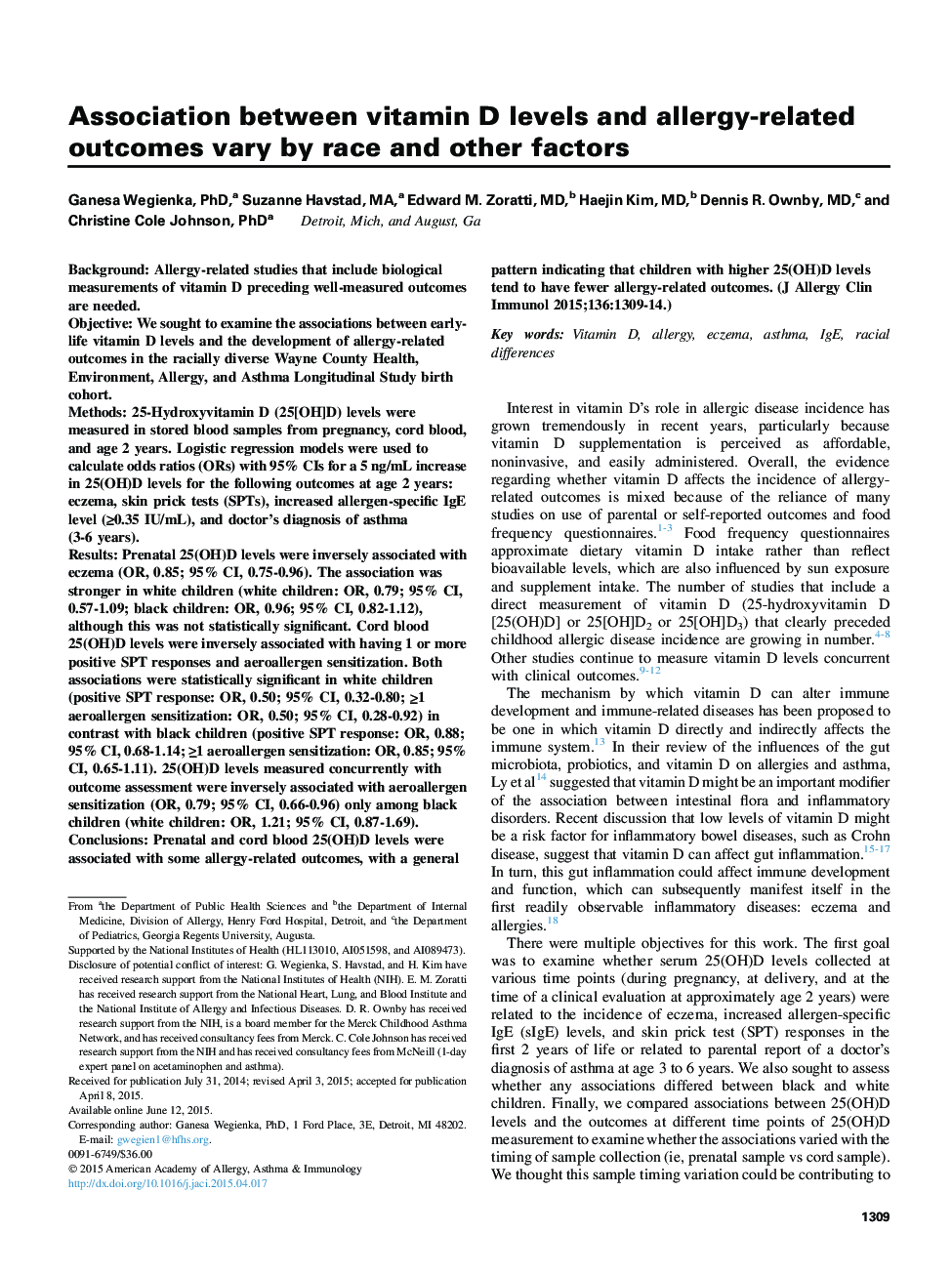| Article ID | Journal | Published Year | Pages | File Type |
|---|---|---|---|---|
| 6063248 | Journal of Allergy and Clinical Immunology | 2015 | 10 Pages |
BackgroundAllergy-related studies that include biological measurements of vitamin D preceding well-measured outcomes are needed.ObjectiveWe sought to examine the associations between early-life vitamin D levels and the development of allergy-related outcomes in the racially diverse Wayne County Health, Environment, Allergy, and Asthma Longitudinal Study birth cohort.Methods25-Hydroxyvitamin D (25[OH]D) levels were measured in stored blood samples from pregnancy, cord blood, and age 2 years. Logistic regression models were used to calculate odds ratios (ORs) with 95% CIs for a 5 ng/mL increase in 25(OH)D levels for the following outcomes at age 2 years: eczema, skin prick tests (SPTs), increased allergen-specific IgE level (â¥0.35 IU/mL), and doctor's diagnosis of asthma (3-6 years).ResultsPrenatal 25(OH)D levels were inversely associated with eczema (OR, 0.85; 95% CI, 0.75-0.96). The association was stronger in white children (white children: OR, 0.79; 95% CI, 0.57-1.09; black children: OR, 0.96; 95% CI, 0.82-1.12), although this was not statistically significant. Cord blood 25(OH)D levels were inversely associated with having 1 or more positive SPT responses and aeroallergen sensitization. Both associations were statistically significant in white children (positive SPT response: OR, 0.50; 95% CI, 0.32-0.80; â¥1 aeroallergen sensitization: OR, 0.50; 95% CI, 0.28-0.92) in contrast with black children (positive SPT response: OR, 0.88; 95% CI, 0.68-1.14; â¥1 aeroallergen sensitization: OR, 0.85; 95% CI, 0.65-1.11). 25(OH)D levels measured concurrently with outcome assessment were inversely associated with aeroallergen sensitization (OR, 0.79; 95% CI, 0.66-0.96) only among black children (white children: OR, 1.21; 95% CI, 0.87-1.69).ConclusionsPrenatal and cord blood 25(OH)D levels were associated with some allergy-related outcomes, with a general pattern indicating that children with higher 25(OH)D levels tend to have fewer allergy-related outcomes.
